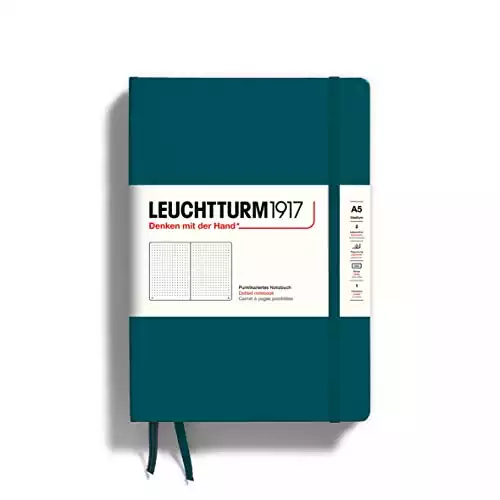Every year, I keep a notebook.
But it’s not a journal. As much as I’d love to be someone scratching my innermost thoughts on paper, it never seems to stick.
I use a commonplace book.
Commonplace notebooks have been around forever. Marcus Aurelius used one, and so did Montaigne, Mark Twain, and Virginia Woolf.
For centuries, farmers, poets, students, and naturalists carried around pocket notebooks to jot down thoughts, observations, recipes, and probably people’s phone numbers when you had to remember them back in the day.
For a while, it seemed like a lost art. But maybe it’s making a comeback.
What is a commonplace book?
A commonplace book is a notebook filled with curated nuggets like quotes I enjoy, books I’ve come across, poorly sketched-out doodles, glued fortune cookie wrappers, and the like.
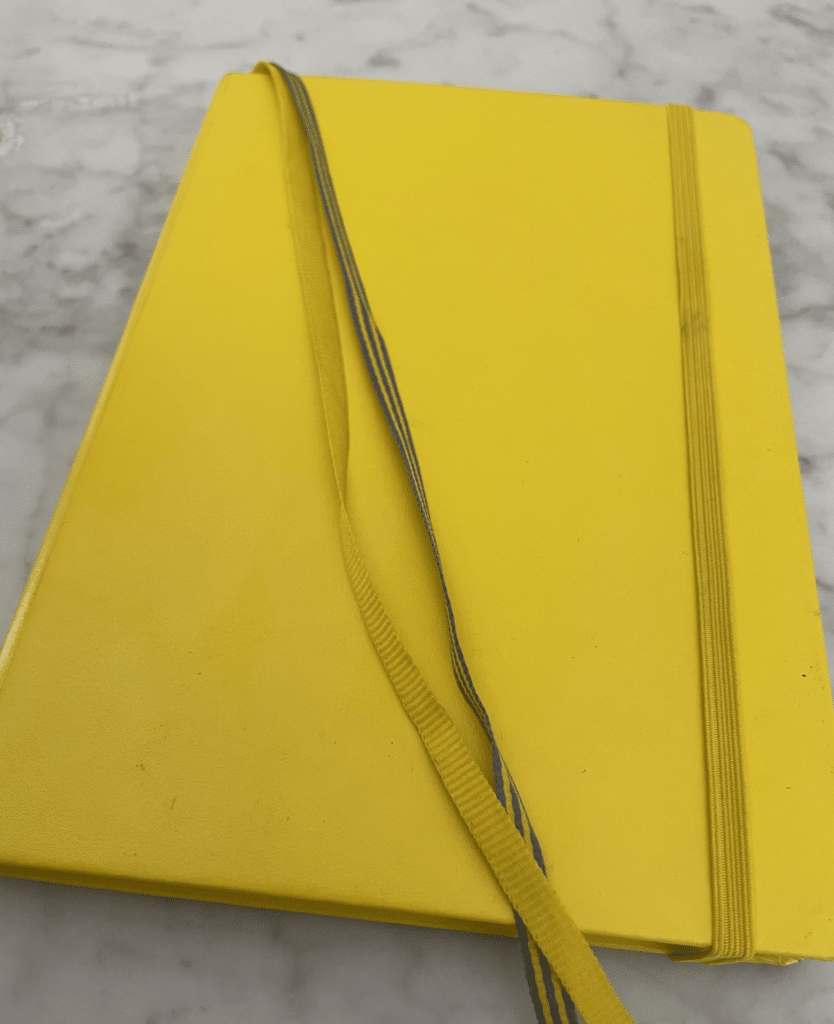
Nine year old me would have been thrilled by this development.
What I like about it is there’s no rhyme or reason to what goes in there. One day, it’s thoughts about growing my business or notes on a course I’m taking, and the next, it’s three things I’m grateful for.
I think that’s what appeals to me. There’s no pressure to add to it daily, but it has enough structure to keep me engaged in the process.
If you’ve felt intimidated by keeping a journal or a daily diary or going all out designing an intricate system of bullet journaling, a commonplace book may work for you.
What can you write in your commonplace journal?
Anything.
Next paragraph.
Ok, I get it. I write for a living.
Staring at a blank page is daunting — even when the point of the page is to write what you’d like. Actually, that probably makes it more difficult.
But we can’t ChatGPT our way out of this one.
So here are a few places to get started:
- Quotes. Write down your favorite quotes from books, movies, songs, or speeches that inspire you. This was how I got started.
- Ideas. Jot down any ideas that come to mind. Sometimes, I’ll have a great idea I don’t want to forget about an upcoming article or see a cool place to add to my bucket list.
- Observations and reflections. Take note of interesting things you see or experience throughout the day, whether in nature or your thoughts and feelings.
- Goals. Write down your short-term and long-term goals, your plans to get them done, and track your progress.
- Reviews. I’ve jotted down my thoughts on everything from books to tea to classical music albums.
- Learning. I’ll keep my commonplace book handy to take any notes from classes or webinars I watch.
- Gratitude. This is an easy way to start. Write down 2-3 things you’re grateful for each day, whether it’s a good meal or a kind gesture from a friend.
Download this cheatsheet and get expert solutions for the 13 most common pen problems.
Get The FREE CheatsheetSome examples of commonplace notebooks
Still stuck?
Let’s try a few examples to help let you feel the inspiration.
A bunch of museums like Harvard and Yale have examples of commonplace books in their libraries and digital archives.
Here’s one from the Peabody Essex Museum.
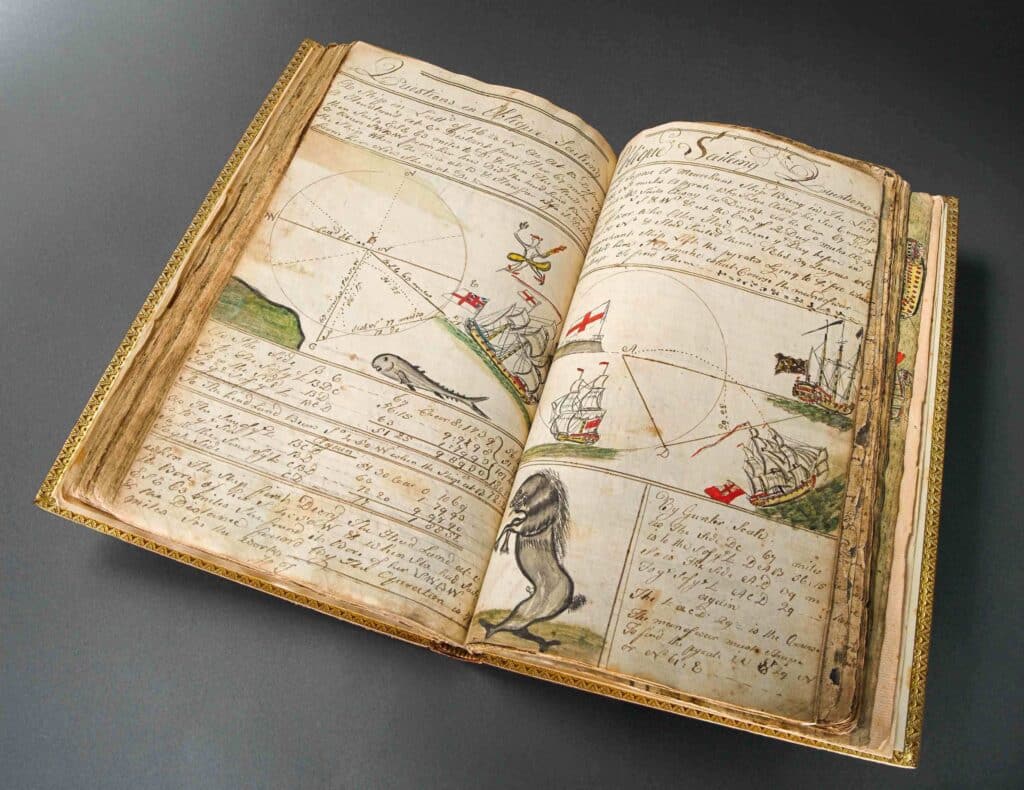
This is on the high-end range of the baller commonplace book scale. So don’t feel like you have to start with schooners and whales.
(Though if you do, take a pic and send it to me).
For something a bit more modern, check out Austin Kleon’s site. He has three daily journals he uses and gets so creative with them.
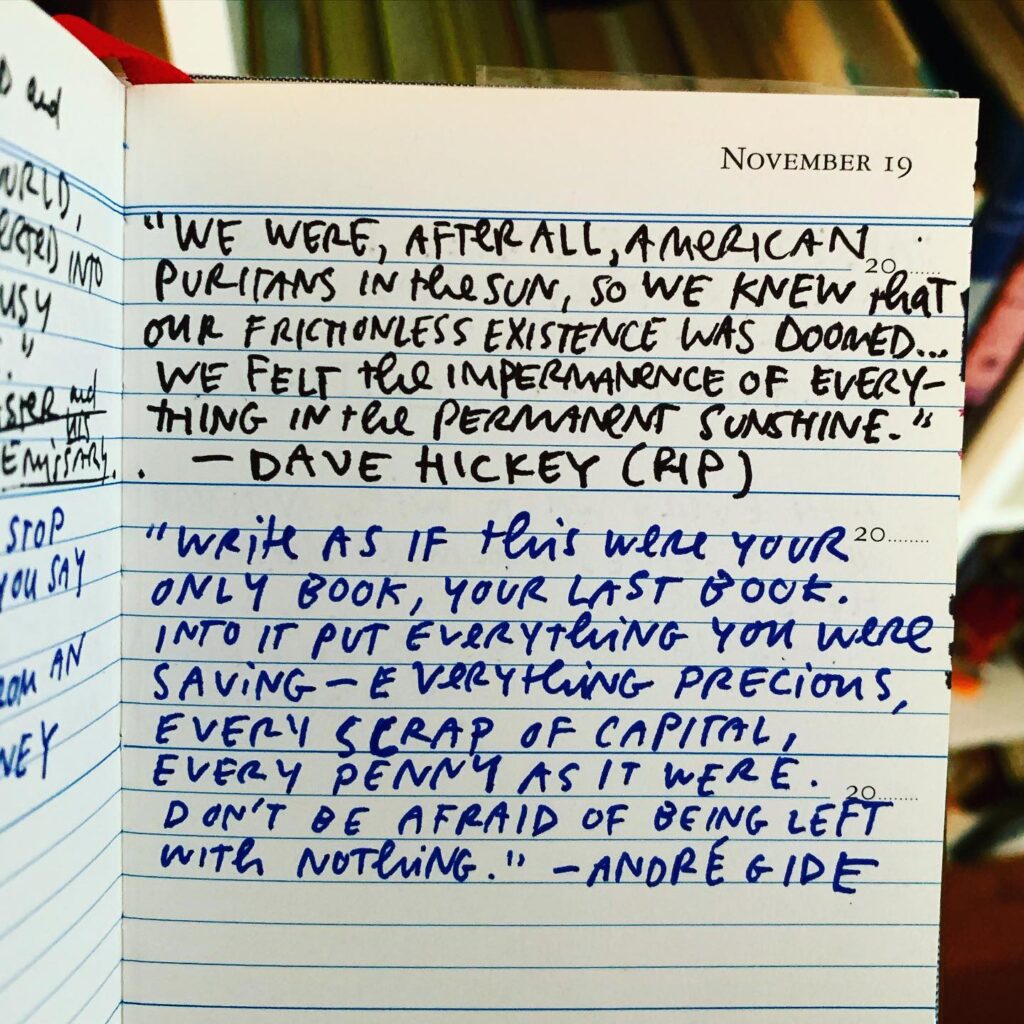
If you want to use your commonplace book for more fun stuff, get The Steal Like an Artist Journal, it helped me realize (years into it) that it was perfectly cool to add some doodles and weird art to my notebook.
Here are a few of my entries from 2022.
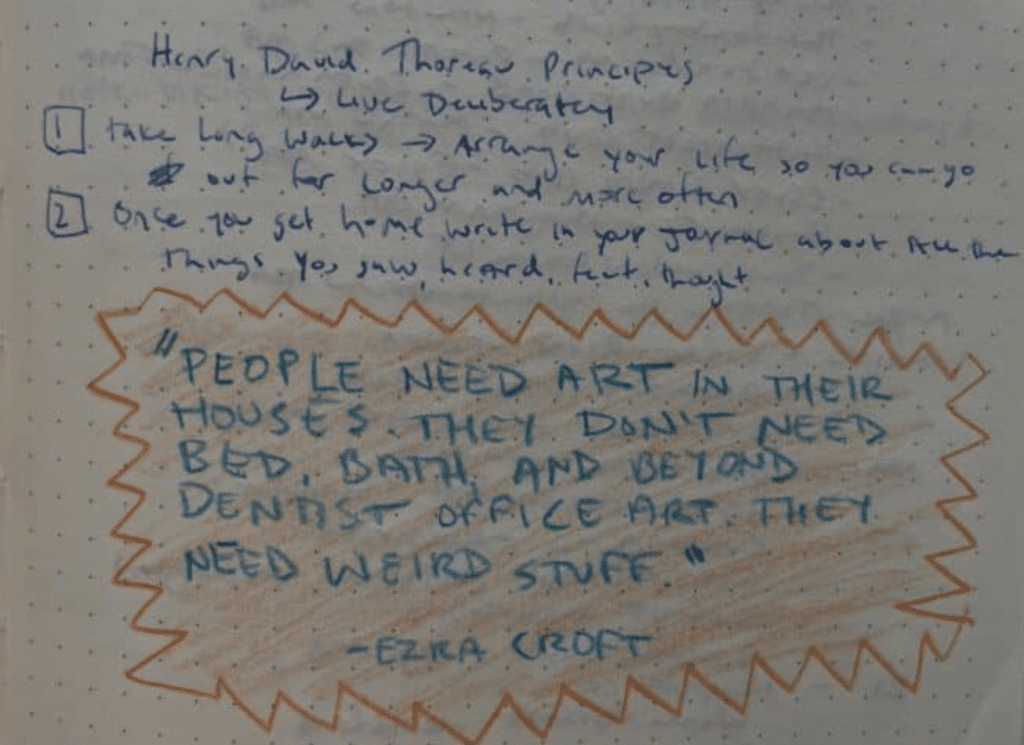
Yes, Moby Dick does rip.
This is a good illustration of what my book usually looks like, with more quotes tossed in.
Below is when I allow my creative juices to flow and see what I come up with.
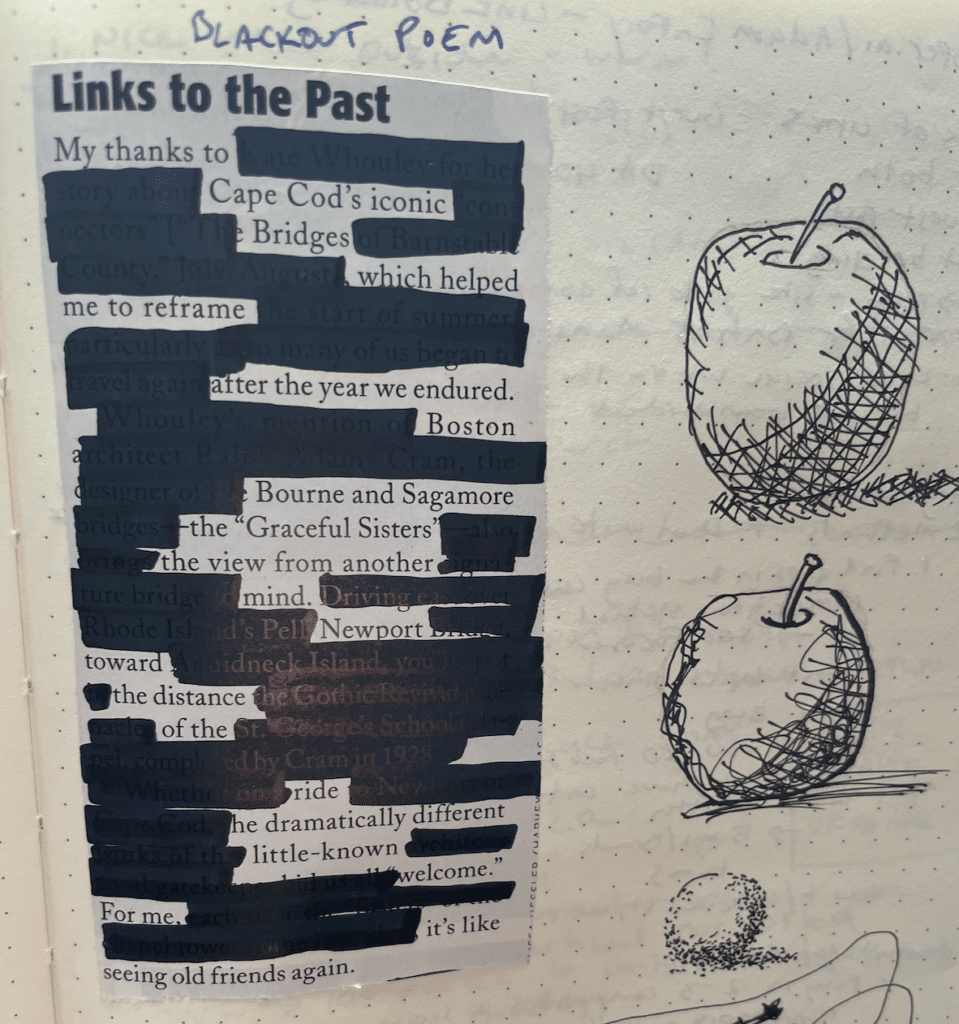
You can see, it’s pretty messy and not super organized, but it’s what’s happening in my brain at any given time and makes it onto paper.
Five minutes of doodling in a notebook can do you a world of good.
A few pieces of advice
If you’re anything like me, this project is going to excite you.
You’ll head to your nearest bookstore or eCommerce shop and agonize over picking the exact right notebook or pen for your needs.
Stop.
Take a breath and start small.
You don’t need to bust your budget.
While I use a LEUCHTTURM1917 for my commonplace book, I’ve seen people use Field Notes, Muji Notebooks, and legal pads.
This is my notebook of choice. I love my 1917 and have been using them for years.
The notebook doesn’t matter. What you put it in does.
So find something that’s going to help you start the habit, then move on to agonizing about notebooks.
Believe me; there are so many cool notebooks out there I make a hobby of agonizing over them.
And finally, the most important thing to remember about starting your commonplace notebook is it’s yours.
Write in it daily, or once a month, or once a year. It’s all about using it as an analog place to capture and curate the things that are interesting to you.
No one ever has to see it. You don’t need to look back at it if you don’t want to.
Start your own commonplace book
I hope this post has convinced a few of you to get your own commonplace book and give it a try.
If you want to chat notebooks, pens, or anything else, shoot me an email. I’d love to see what you’ve got going on your desk.
Liz
Hey, I'm Liz. I'm the founder of this thing. Pen-obsessed and a notebook nut, I love writing by hand. So I'm gonna talk about it on a computer.Download this cheatsheet and get expert solutions for the 13 most common pen problems.
Get The FREE Cheatsheet
